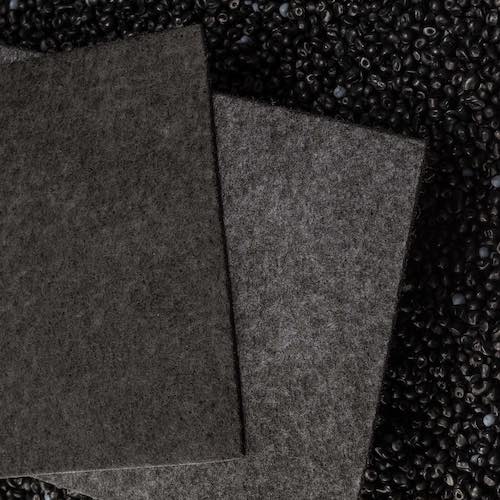Some geosynthetics are manufactured to withstand long term exposure to the elements, extreme temperatures, and puncture resistance. With this is mind, proper on-site material storage prior to installation is still critical. This small step can help ensure your liner materials are useable, damage free and able to live up to expectations when it comes time for installation.
Element Elimination
Degradation of geosynthetics can come from a variety of natural factors. Some products, such as PVC Geomembrane and geotextile, are excellent for use in buried applications and are not formulated for extended UV exposure. Over time, sunny conditions can degrade the quality of the product; potentially impacting their long-term performance. Moisture is also a consideration for geosynthetics such as Geosynthetic Clay Liner (GCL). It is essential that rolls of GCL and similar materials be kept dry prior to installation, as premature hydration may result in unusable product. Another consideration is that extra moisture can create excessively heavy rolls of material which have the potential to be very dangerous and difficult to work with for crews on-site.
Temperature Tango
Another potential damaging factor to pre-installed geomembranes and seaming materials is extreme heat and cold. Geosynthetic materials such as PVC are not invented to be exposed to extreme cold unless they are held in place and protected by soil or water. If material storage must be done in cold temperatures, it is essential that they are kept in-place as the potential of cold cracking and damage to the liner is heightened. Extreme heat can also cause materials such as Polyethylene to break down and reduce their strength properties. Many geomembrane seaming products including adhesives, primers and tapes are also sensitive to large temperature swings. For best results, they should be kept in temperature-controlled storage until use.
Physical Problems with Material Storage
Geosynthetic lining materials left unprotected on site for an extended period can also sustain physical damage from a variety of sources. Biological threats, such as animal disturbance and punctures via large sticks and trees can be the result of improper material storage. Mechanical threats from moving equipment on-site can also cause considerable damage to unprotected geosynthetic materials before installation. When possible, have materials offloaded in the location they will be stored until deployment. This can help reduce the amount of handling and risk of damage.
Another factor to consider when storing Geosynthetic materials on-site is proximity to the working area. Consider designating the liner storage area to a location adjacent or very close to the project. The less distance required to move material with heavy equipment, the lower the chances are of damage during transport to deployment.
Keeping geosynthetic materials high and dry prior to installation is also a critical part of creating a quality end product. If rolls of liner are left sitting in wet clay or mud prior to deployment, additional cleaning will be required prior to seaming. Welding anything but debris-free and dry geosynthetic materials inevitably result in QC issues. Protecting materials so that they are clean upon deployment will save precious time and money on your installation.
Material Storage Solutions
How materials are stored on-site can improve the overall quality of your geomembrane end product. If possible, have geosynthetic liners and accessories delivered to the jobsite as close to scheduled installation as practical. This simple step can help reduce exposure to weather, temperature change and physical damage. Location of stored material is critical. Keeping them near the jobsite, high and dry, and tarped when necessary, is the first step for a quality installation. Contact ICS for more information on quality-controlled products and installation!





